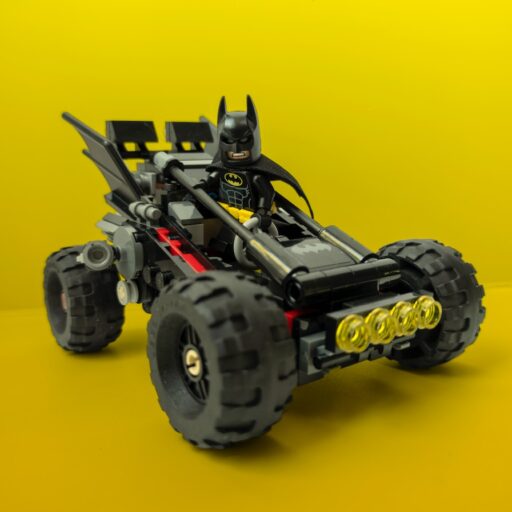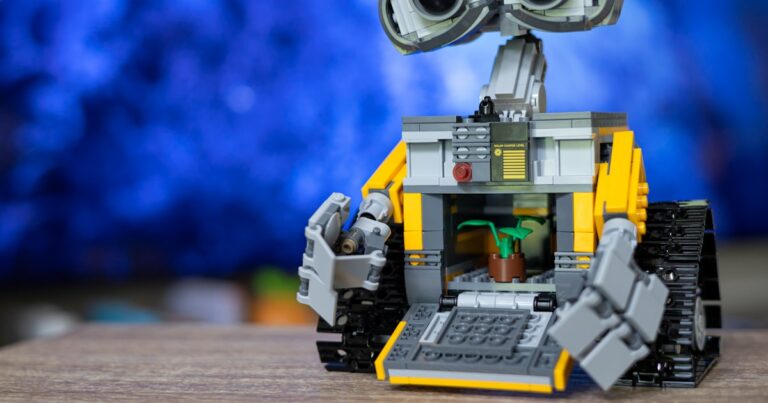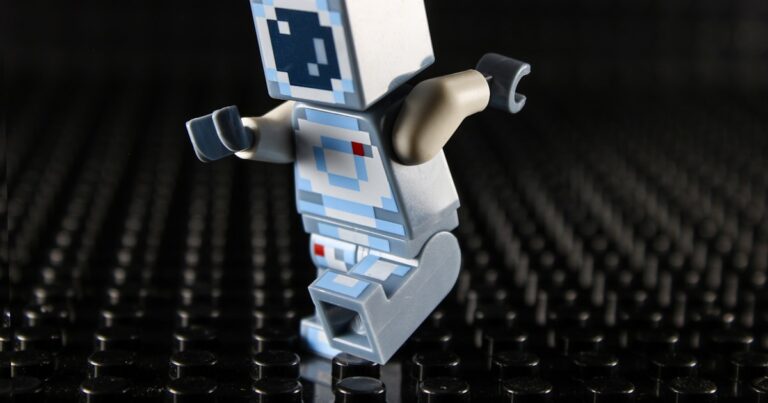Support our educational content for free when you purchase through links on our site. Learn more
🚀 15 Ways LEGO Robotics Programming Transforms Learning (2025)
Welcome to the thrilling universe of LEGO Robotics Programming! Imagine a classroom where students build robots that dance, solve mazes, or even respond to touch. Sounds like science fiction? It’s not! With LEGO Robotics, this is the reality for many young learners today. But how do you get started, and which kit is right for you or your child? 🤔
In this article, we’ll explore 15 transformative ways LEGO Robotics is shaping education and creativity in 2025. From the evolution of these kits to their integration in classrooms, we’ve got all the insights you need. Whether you’re a parent, teacher, or curious kid, you’ll discover how these innovative tools can unlock a world of possibilities. So, are you ready to dive in and see why LEGO Robotics is a game-changer? Let’s get started!
Key Takeaways
- LEGO Robotics combines creativity with technology, enhancing STEM education.
- Kits like LEGO Mindstorms and LEGO Boost cater to different ages and skill levels, offering endless possibilities.
- Programming on tablets makes learning interactive and accessible.
- Educational Impact: Encourages critical thinking, problem-solving, and teamwork.
- 👉 Shop LEGO Robotics Kits on:
- LEGO Mindstorms: Amazon | Walmart | LEGO Official Website
- LEGO Boost: Amazon | Walmart | LEGO Official Website
Ready to transform learning with LEGO Robotics? Let’s build a brighter future, one brick at a time! 🧱
Table of Contents
🔍 The Evolution of LEGO Robotics Programming
🤖 Why LEGO Robotics is a Game-Changer for Kids
🛠️ Essential LEGO Robotics Kits for Beginners
- LEGO Mindstorms: The Classic Choice
- LEGO Boost: Perfect for Younger Builders
- LEGO Spike Prime: For the Advanced Learner
📱 Programming on Tablets: The New Frontier
🚀 Create Your First Program on Your Tablet
🏃 Make Your Robot Move: A Step-by-Step Guide
🤲 Make Your Robot Respond to Touch: Interactive Fun
🎓 Integrating LEGO Robotics in Education
🔗 Connecting LEGO Robotics with Other STEM Fields
💡 Troubleshooting Common LEGO Robotics Issues
⚡️ Quick Tips and Facts
Welcome to the world of LEGO Robotics Programming! Whether you’re a parent, a teacher, or a curious kid, you’re about to embark on a journey that’s as exciting as a rollercoaster ride. Here are some quick tips and facts to get you started:
- LEGO Robotics combines creativity with technology, making learning fun and engaging. 🎉
- Programming languages used in LEGO Robotics include block-based coding like Scratch and text-based languages like Python. Learn more about Scratch.
- LEGO Mindstorms and LEGO Boost are popular kits that cater to different age groups and skill levels. Check out our Building Blocks and Sets for more options.
- STEM education is enhanced through LEGO Robotics, fostering skills in science, technology, engineering, and mathematics. Explore STEM Toys.
Ready to dive deeper? Let’s explore the evolution of LEGO Robotics Programming!
🔍 The Evolution of LEGO Robotics Programming
LEGO Robotics has come a long way since its inception. It all started with the iconic LEGO Mindstorms, which revolutionized the way kids interact with technology. But how did we get here?
From Simple Blocks to Smart Bricks
- Early Days: LEGO bricks were just colorful building blocks. But with the introduction of programmable bricks, the game changed forever.
- LEGO Mindstorms: Launched in the late 1990s, it was a game-changer, allowing kids to build and program their own robots. Discover more about LEGO Mindstorms.
- Modern Innovations: Today, kits like LEGO Boost and LEGO Spike Prime offer more advanced programming options, catering to different age groups and skill levels.
The evolution continues, and the possibilities are endless. Let’s see why LEGO Robotics is a game-changer for kids!
🤖 Why LEGO Robotics is a Game-Changer for Kids
LEGO Robotics isn’t just about building cool robots; it’s about unlocking a world of possibilities. Here’s why it’s a must-have for kids:
Benefits of LEGO Robotics
- Enhances Creativity: Kids can design and build their own robots, fostering creativity and imagination.
- Develops Problem-Solving Skills: Programming challenges encourage kids to think critically and solve problems.
- Promotes Teamwork: Working on projects together helps kids learn the value of collaboration.
- Encourages STEM Learning: Integrates science, technology, engineering, and math in a fun and engaging way. Explore Educational Toys.
But don’t just take our word for it. Here’s what some of our Toy Brands™ families have to say:
“My son built a robot that could dance! It was amazing to see his excitement and creativity come to life.” – Sarah, a happy parent.
Now, let’s dive into the essential LEGO Robotics kits for beginners.
🛠️ Essential LEGO Robotics Kits for Beginners
Choosing the right LEGO Robotics kit can be overwhelming. But fear not! We’ve got you covered with our top picks for beginners.
1. LEGO Mindstorms: The Classic Choice
| Aspect | Rating (1-10) |
|---|---|
| Design | 9 |
| Functionality | 10 |
| Ease of Use | 8 |
| Educational Value | 10 |
LEGO Mindstorms is the classic choice for those looking to dive into robotics. With its advanced sensors and motors, it’s perfect for older kids and teens.
- Features: Includes programmable bricks, sensors, and motors.
- Benefits: Offers advanced programming options and endless possibilities.
- Drawbacks: May be complex for younger kids.
👉 CHECK PRICE on:
2. LEGO Boost: Perfect for Younger Builders
| Aspect | Rating (1-10) |
|---|---|
| Design | 8 |
| Functionality | 9 |
| Ease of Use | 9 |
| Educational Value | 9 |
LEGO Boost is ideal for younger builders who are just starting out. It’s user-friendly and offers a great introduction to robotics.
- Features: Easy-to-use app with block-based coding.
- Benefits: Encourages creativity and problem-solving.
- Drawbacks: Limited advanced programming options.
👉 CHECK PRICE on:
3. LEGO Spike Prime: For the Advanced Learner
| Aspect | Rating (1-10) |
|---|---|
| Design | 9 |
| Functionality | 10 |
| Ease of Use | 8 |
| Educational Value | 10 |
LEGO Spike Prime is perfect for advanced learners who want to take their skills to the next level. It’s used in many educational settings for its robust features.
- Features: Includes advanced sensors and motors, compatible with Python.
- Benefits: Great for STEM education and advanced projects.
- Drawbacks: Higher complexity and cost.
👉 CHECK PRICE on:
Now that you’ve got your kit, let’s explore programming on tablets—the new frontier!
📱 Programming on Tablets: The New Frontier
Gone are the days when programming was limited to PCs. Tablets have become a popular choice for programming LEGO Robotics, offering a more interactive experience.
Why Tablets?
- Portability: Tablets are easy to carry around, making them perfect for on-the-go learning.
- User-Friendly: Touch interfaces make programming more intuitive for kids.
- Interactive Apps: Many LEGO Robotics kits come with dedicated apps for tablets, enhancing the learning experience.
Ready to create your first program on your tablet? Let’s get started!
🚀 Create Your First Program on Your Tablet
Creating your first program is like opening a treasure chest of possibilities. Here’s how you can do it:
Step-by-Step Guide
- Download the App: Start by downloading the relevant app for your LEGO Robotics kit. For example, the LEGO Boost app or the EV3 Programmer App.
- Connect Your Robot: Use Bluetooth to connect your tablet to the robot’s programmable brick.
- Explore the Interface: Familiarize yourself with the app’s interface. Most apps use block-based coding, making it easy for beginners.
- Create Your First Program: Drag and drop blocks to create a simple program. For example, make your robot move forward or play a sound.
- Test and Iterate: Run your program and see your robot in action. Make adjustments as needed.
Feeling adventurous? Let’s make your robot move!
🏃 Make Your Robot Move: A Step-by-Step Guide
Making your robot move is like giving it life. Here’s how you can do it:
Step-by-Step Guide
- Select the Move Block: In your app, find the block that controls movement.
- Set the Parameters: Decide how far and in which direction you want your robot to move.
- Add to Your Program: Drag the move block into your program sequence.
- Test It Out: Run your program and watch your robot move! Adjust the parameters if needed.
But wait, there’s more! Let’s make your robot respond to touch.
🤲 Make Your Robot Respond to Touch: Interactive Fun
Interactivity is the name of the game. Making your robot respond to touch adds a whole new dimension to your projects.
Step-by-Step Guide
- Attach the Touch Sensor: Connect the touch sensor to your robot.
- Program the Response: In your app, find the block that controls the touch sensor.
- Set the Action: Decide what action your robot should take when the sensor is pressed.
- Test and Enjoy: Run your program and interact with your robot. It’s like having a new friend!
Now that you’re a pro at programming, let’s see how LEGO Robotics is integrated into education.
🎓 Integrating LEGO Robotics in Education
LEGO Robotics isn’t just for fun; it’s a powerful educational tool. Here’s how it’s making waves in classrooms:
Benefits in Education
- Engages Students: Hands-on learning keeps students engaged and motivated.
- Enhances STEM Skills: Provides practical applications of STEM concepts.
- Fosters Collaboration: Encourages teamwork and communication among students.
Many schools are incorporating LEGO Robotics into their curriculum, making learning more interactive and enjoyable. Learn more about Educational Toys.
But that’s not all. LEGO Robotics also connects with other STEM fields. Let’s explore!
🔗 Connecting LEGO Robotics with Other STEM Fields
LEGO Robotics is like a bridge connecting various STEM fields. Here’s how it fits in:
Interdisciplinary Connections
- Science: Understand physics concepts like force and motion through robotics.
- Technology: Learn about sensors, motors, and programming.
- Engineering: Design and build robots, applying engineering principles.
- Mathematics: Use math to calculate distances, angles, and more.
By integrating LEGO Robotics with other STEM fields, kids gain a comprehensive understanding of how these disciplines work together. Explore STEM Toys.
But what if you encounter issues? Don’t worry, we’ve got you covered with troubleshooting tips!
💡 Troubleshooting Common LEGO Robotics Issues
Even the best-laid plans can hit a snag. Here are some common issues and how to fix them:
Common Issues and Solutions
- Connection Problems: Ensure Bluetooth is enabled and the robot is within range.
- Program Errors: Double-check your code for any mistakes or missing blocks.
- Sensor Malfunctions: Make sure sensors are properly connected and calibrated.
- Battery Issues: Ensure your robot’s battery is charged and functioning.
For more detailed troubleshooting, check out the LEGO Support Page.
And there you have it! You’re now equipped with everything you need to dive into the world of LEGO Robotics Programming. But wait, there’s more to explore! Let’s wrap up with some recommended links and FAQs.
🌟 Conclusion

In the exhilarating world of LEGO Robotics Programming, we’ve explored everything from the evolution of these innovative kits to their profound impact on education and creativity. Whether you’re a parent looking to inspire your child or an educator aiming to enrich your curriculum, LEGO Robotics offers endless possibilities.
Summary of Positives and Negatives
Positives:
- Engaging and Educational: Combines fun with learning, enhancing STEM skills.
- Versatile Kits: Options like LEGO Mindstorms and LEGO Boost cater to different ages and skill levels.
- Interactive Learning: Encourages creativity, problem-solving, and teamwork.
Negatives:
- Complexity for Younger Kids: Some kits may be challenging for younger children.
- Cost: High-quality kits can be an investment.
Recommendation: If you’re looking to ignite a passion for technology and creativity in your child, LEGO Robotics is a fantastic choice. With its blend of fun and education, it’s a tool that can grow with your child, offering new challenges and learning opportunities at every stage.
🔗 Recommended Links
👉 Shop LEGO Robotics Kits on:
- LEGO Mindstorms: Amazon | Walmart | LEGO Official Website
- LEGO Boost: Amazon | Walmart | LEGO Official Website
- LEGO Spike Prime: Amazon | Walmart | LEGO Official Website
Recommended Books:
❓ FAQ

What programming languages are used in LEGO robotics?
LEGO Robotics primarily uses block-based coding languages like Scratch, which are ideal for beginners. Advanced kits like LEGO Spike Prime also support Python, a text-based language. This variety allows users to start simple and progress to more complex programming as they gain confidence.
Read more about “Is LEGO Mindstorms Discontinued? 7 Facts You Need to Know in 2025 🤖”
How do I get started with LEGO robotics programming for kids?
To get started, choose a kit that matches your child’s age and skill level, like LEGO Boost for younger kids or LEGO Mindstorms for older ones. Download the corresponding app, and begin with simple projects to build confidence. Explore our STEM Toys for more options.
Read more about “LEGO Mindstorms: 8 Must-Know Secrets to Master Robotics 🤖 (2025)”
What are the benefits of using LEGO robotics for educational purposes?
LEGO Robotics enhances STEM education by integrating science, technology, engineering, and mathematics in a hands-on way. It promotes critical thinking, problem-solving, and teamwork, making learning interactive and engaging.
Can I use LEGO robotics to teach programming concepts to adults?
Absolutely! While LEGO Robotics is popular with kids, its advanced features make it suitable for adults interested in learning programming and robotics. Kits like LEGO Mindstorms offer complex challenges that can teach programming concepts effectively.
Read more about “What Are Robotic Legos Called? Top 4 Kits to Know in 2025 🤖”
What is the difference between LEGO Mindstorms and LEGO Boost programming?
LEGO Mindstorms offers more advanced programming options with a focus on complex robotics, suitable for older kids and adults. LEGO Boost is designed for younger children, with simpler block-based programming and a focus on creativity and fun.
How can I use LEGO robotics to develop problem-solving skills in children?
LEGO Robotics encourages children to tackle challenges by building and programming their own robots. This process requires critical thinking and problem-solving, as kids must figure out how to make their creations work as intended.
Read more about “Who Is the Biggest Toy Producer? Top 5 Giants Revealed (2025) 🧸”
What are some popular LEGO robotics kits for beginners to learn programming?
Popular kits for beginners include LEGO Boost, perfect for younger builders, and LEGO Mindstorms, ideal for those ready for more advanced projects. Both kits offer engaging ways to learn programming through hands-on building and coding.
📚 Reference Links
- LEGO Official Website
- STEM Coding & Programming in Education | LEGO® Education
- Scratch Programming
- Python Programming Language
With these insights and resources, you’re well-equipped to embark on your LEGO Robotics adventure. Happy building and programming! 🚀







